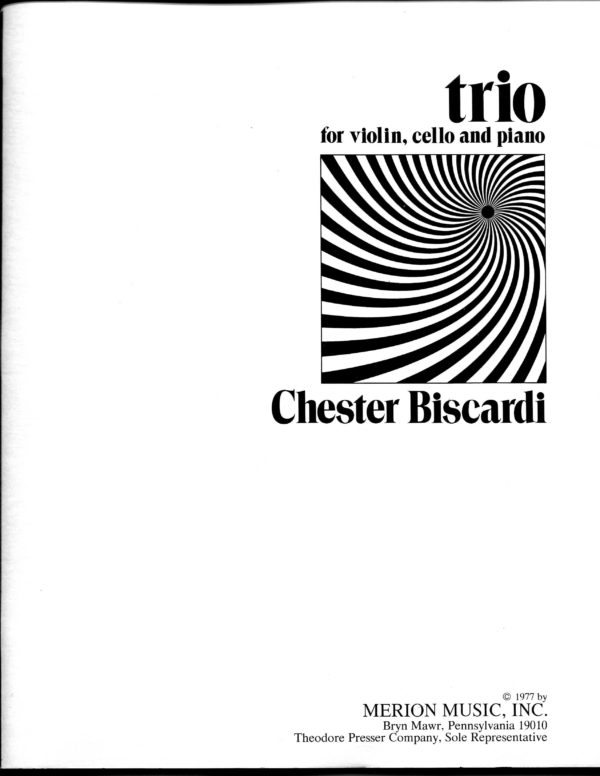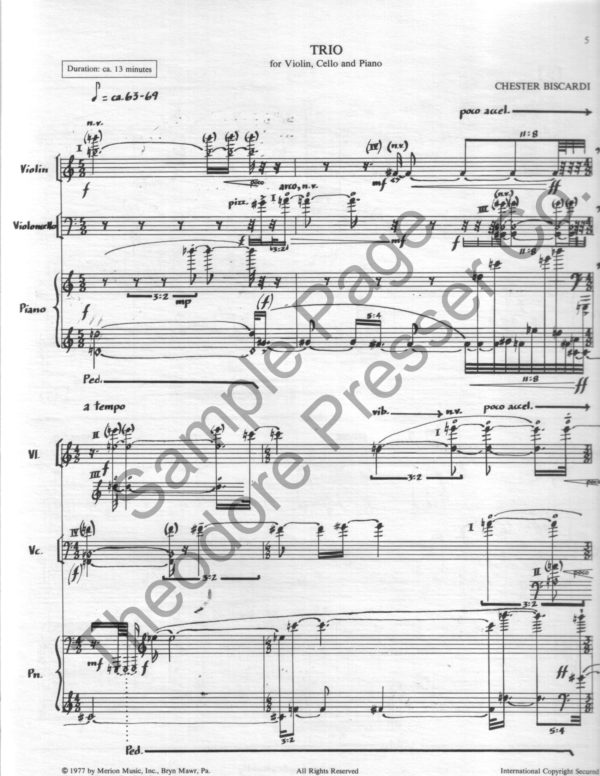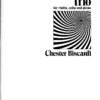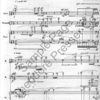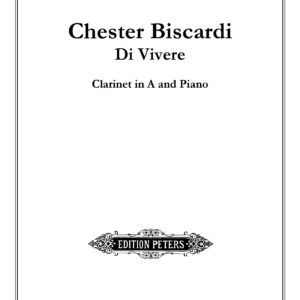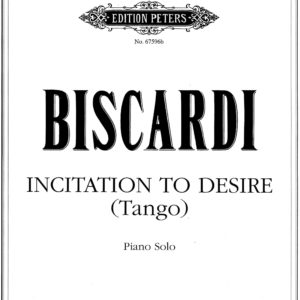Description
Premiere
25 May 1977
Massimo Coen, violin / Giancarlo Mori, violoncello / Antonello Neri, piano (Nuova Consonanza)
American Academy in Rome
Rome, Italy
Commissioner
Commissioned by the Cambium Trio under a grant from the Wisconsin Arts Board and the National Endowment for the Arts, with a matching grant from the University of Wisconsin, 1976
Publisher
Program Notes
This work has a one-movement structure loosely constructed by the juxtaposition or overlapping of ten sections. The nature of the music, both locally and throughout the work, lends itself to very long and expressive gestures. Phrases within gestures, however, should be played with clarity and incisiveness, keeping a sure smoothness of interconnection and a clearly articulated continuity of movement. Unlike traditional piano trios, this work requires an ensemble acoustically balanced and unified, incorporating and extending the individual roles and composite possibilities of the three instruments. The performers should always keep in mind the timbres of their instruments as well as the textures of the work, created by the repetition of tones or cells that establish rich, sonorous centers (the frequent appearance of unisons, “leading tone” effects, pivotal pitches, areas saturated by registerally frozen tones, etc.). I suggest a rather rubato interpretation of the rhythmic structure.
The writing of this work, commissioned by and dedicated with warmest wishes and friendship to the Cambium Trio (Thomas Moore, violin, Warren Downs, cello, and Howard Karp, piano), was supported in part by a grant from the Wisconson Arts Board, the state’s statutory agency, and the National Endowment for the Arts, with a matching grant from the University of Wisconsin-Madison.
Is it not time that, in loving,
we freed ourselves from the loved one, and, quivering, endured:
as the arrow endures the string, to become, in the gathering out-leap,
something more than itself?Rilke, in the First Duino Elegy


